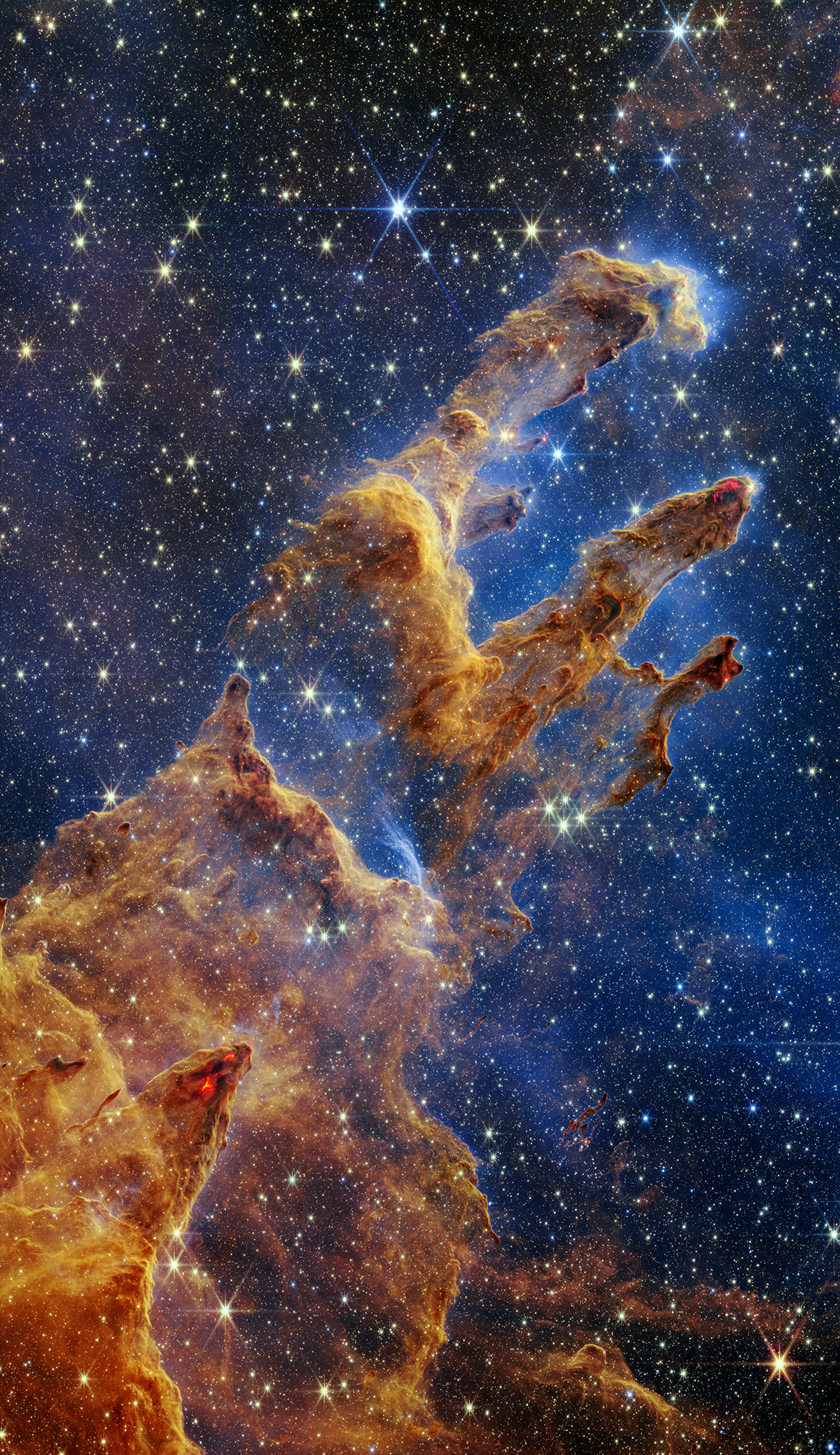New photos from Nasa’s Webb Telescope uncover newborn stars in the Pillars of Creation
Peering through dust and gas, the Webb telescope reveals a sea of stars where the Hubble telescope saw murky cosmic mist

Nasa’s James Webb Space Telescope has once again shed new light on an old space image. This time, it’s revealed exquisite details and scores of newborn stars in an image of a distant nebula made famous by the Hubble Space Telescope in the 1990s.
In the new image released by the Space Telescope Science Institute on Wednesday, three main columns of orange-russet gas appear sheathed in blue auras against a backdrop sea of gem-like stars.
These are the Pillars of Creation, massive columns of hydrogen gas — the longest is four light years long — in the Eagle Nebula, some 5,700 light years from Earth. The pillars were first imaged by the Hubble Space Telescope in 1995, becoming one of the older space telescope’s most famous images.
The Hubble image, taken in primarily visible and ultraviolet light with some near-infrared data, lacks the depth and detail of the new Webb telescope image. An entirely infrared spectrum telescope, that’s extremely sensitive to those wavelengths of light, Webb’s instruments could peer through gas and dust to bring out myriad more stars than Hubble, with newly born stars showing red and pink, and fully formed stars glowing yellow and blue.
The Pillars of Creation are the thicker remnants of a larger cloud of molecular hydrogen that has since been evaporated by the intense ultraviolet light of young stars that formed out of the cloud, according to Nasa’s Hubble telescope website, a process known as photoevaporation.
The new Webb image highlights how this process is also taking place within the pillars themselves.
“When knots with sufficient mass form within the pillars of gas and dust,” reads the Webb telescope website, “they begin to collapse under their own gravity, slowly heat up, and eventually form new stars.”
The crimson glow seen at the tips of some of the pillars, almost as if they have dipped in red paint, is the result of these newborn stars. New stars not only push on the surrounding material with their light and solar winds, they occasionally emit supersonic jets of material, which then create rippling shockwaves in the pillars.
“The crimson glow comes from the energetic hydrogen molecules that result from jets and shocks,” the Webb website reads. “These young stars are estimated to be only a few hundred thousand years old.”
Although the new Webb images capture thousands more background stars than the Hubble image, there are no background galaxies visible as there have been in other Webb images. This is because the angle of view aligns with the disk of our Milky Way galaxy, and the thick gas and dust in the spaces between the stars of our galaxy block Webb’s view into the distant cosmos.
The Space Telescope Science Institute, in Baltimore, operates both the Webb and Hubble telescopes for Nasa.
Subscribe to Independent Premium to bookmark this article
Want to bookmark your favourite articles and stories to read or reference later? Start your Independent Premium subscription today.

Join our commenting forum
Join thought-provoking conversations, follow other Independent readers and see their replies